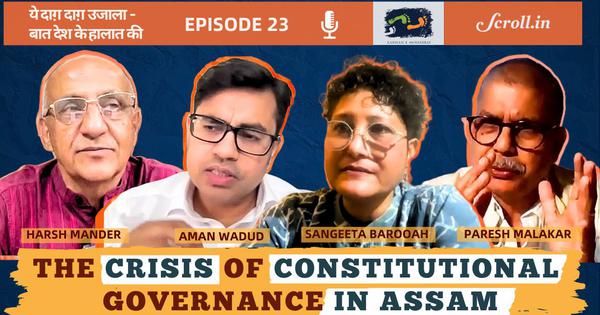UPSC Exam Question Paper Bank: Preparatory questions for the UPSC exam
Test your preparation for the UPSC exam by attempting selected questions based on previous years’ UPSC papers.

Prepare for the UPSC exam by reviewing previous years’ question papers. Here are a few questions from previous years’ UPSC exam question papers, with the answers, so that you are ready to take the exam. Go through the list of questions (with answers) that we’ve selected from previous years’ UPSC exam papers, and then attempt our quiz at the bottom.
General awareness
1. In the parliament of India, the purpose of an adjournment of motion is:
(A) to allow a discussion on a public matter of public importance
(B) to let opposition members collect information from the ministers
(C) to allow a reduction of a specific amount in demand for grant
(D) to postpone the proceedings to check the inappropriate or violent behaviour on the part of a member
Ans: A
2. Consider the following provisions under Directive Principles of State Policy as enshrined in the Constitution of India:
I. Securing the citizens of India a uniform civil code
II. Organising village panchayat
III. Promoting cottage industries in rural India
IV. Securing for all the workers a reasonable leisure and cultural opportunities
Which of the above are the Gandhian Principles that are reflected in the Directive Principles of State Policy?
(A) I, II, and IV only
(B) II and III only
(C) I, III, and IV only
(D) I, II, III, and IV
Ans: B
3. With reference to consumer rights/privileges under the provisions of law of India, which of the following statements is/are correct?
I. Consumers and empowered to take samples for food testing
II. When a consumer files a complaint in any consumer forum, no fee is required to be paid
III. In case of death of a consumer, his or her legal heir can file a complaint in the consumer forum on his or her behalf.
Select the correct answer using the codes given below.
(A) I only
(B) II and III only
(C) I and III only
(D) I, III, and III
Ans: C
4. Lead, ingested or inhaled, is a health hazard. After the addition of lead to petrol has been banned, what still are sources of lead poisoning?
I. Smelting units
II. Pens and pencils
III. Paints
IV. Hair oils and cosmetics
(A) I, II, and III only
(B) I and III only
(C) II and IV only
(D) I, II, III, and IV
Ans: B
5. The Nagara, the Dravida, and the Vesara are the:
(A) three main racial groups of the Indian subcontinent
(B) three main linguistic divisions into which the languages of India can be classified
(C) three main styles of Indian temples
(D) three main musical gharanas prevalent in India
Ans: C
6. When you travel in Himalayas, you will see the following:
I. Deep gorges
II. U-turn river courses
III. Parallel mountain ranges
IV. Steep gradients causing land-sliding
Which of the above can be said to be the evidences of Himalayas being young fold mountains?
(A) I and II only
(B) I, II, and IV only
(C) III and IV only
(D) I, II, III, and IV
Ans: D
CSAT
7. A person has only Rs. 1 and Rs. 2 coins with her. If the total number of coins that she has is 50 and the amount of money she has with her is Rs. 75, then the number of Re. 1 and Rs. 2 coins are, respectively:
(A) 15 and 35
(B) 35 and 15
(C) 30 and 20
(D) 25 and 25
Ans: D
8. There are 100 students in a particular class. 60% students play cricket, 30% students play football, and 10% students play both the games. What is the number of students who play neither cricket not football?
(A) 25
(B) 20
(C) 18
(D) 15
Ans: B
9. If a bus travels 160 km in 4 hours and a train travels 320 km in 5 hours at uniform speed, then what is the ratio of distances travelled by them in one hour?
(A) 8:5
(B) 5:8
(C) 4:5
(D) 1:2
Ans: B
10. A cube has all its faces painted with different colours. It is cut into smaller cubes of equal sizes such that the side of the small cube is one-fourth the big cube. The number of small cubes with only one of the sides painted is:
(A) 32
(B) 24
(C) 16
(D) 8
Ans: B














